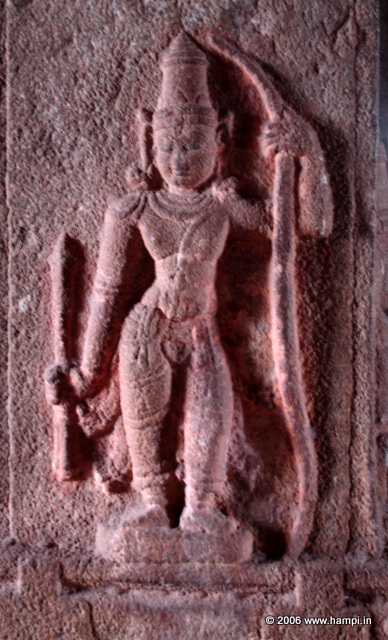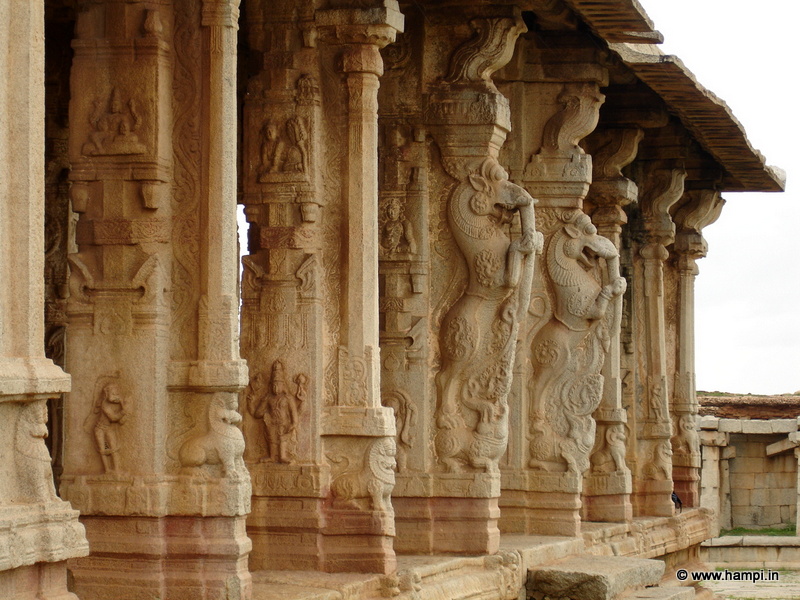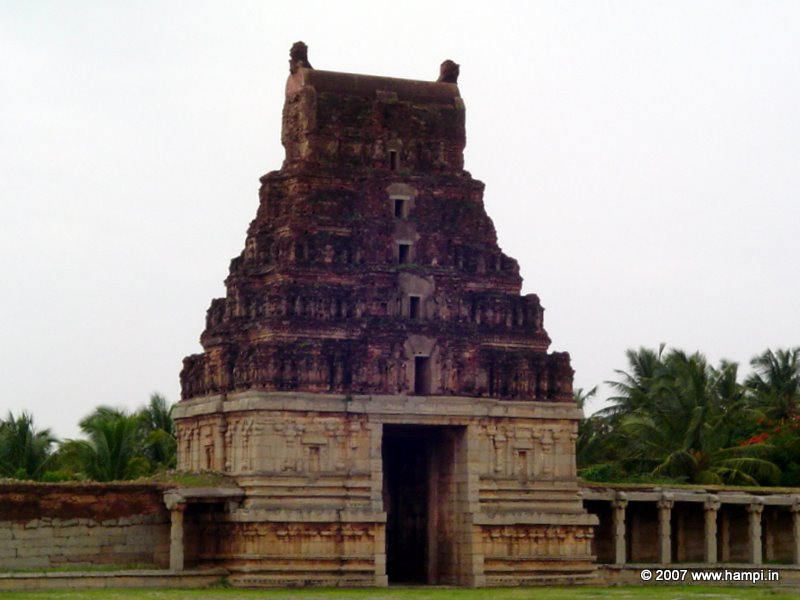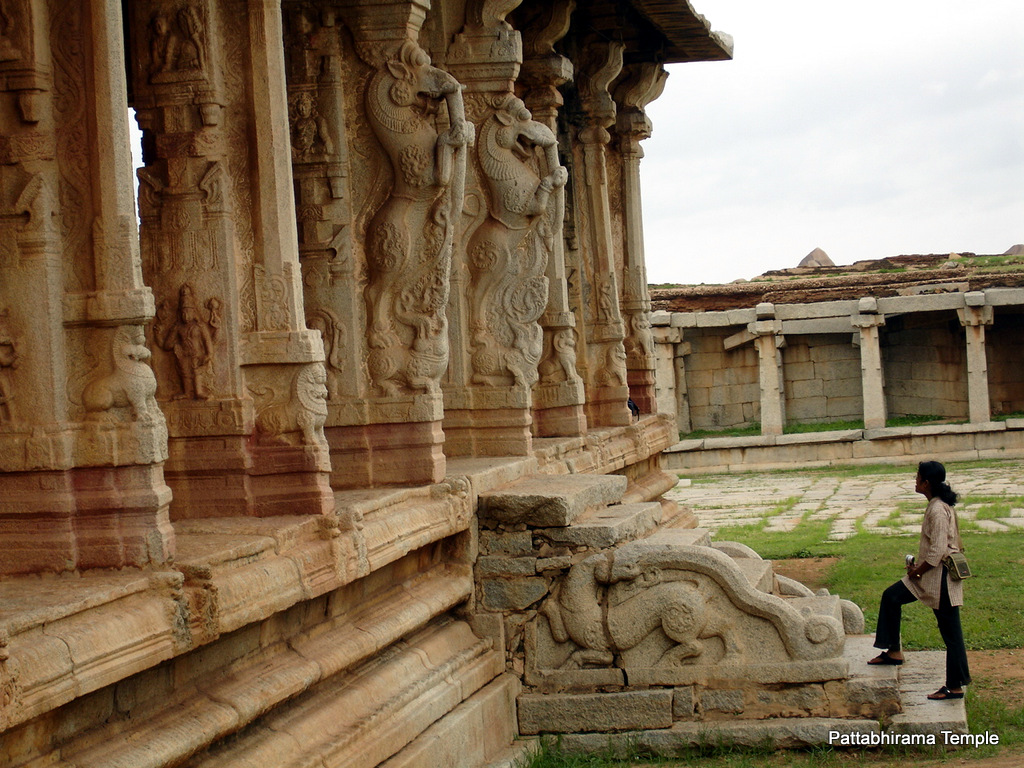Pattabhirama Temple
This temple a bit off from the main tourist trail is notable for its size and completeness. Though not as much ornate, the Pattabhirama Temple is as large as the more poplar Vittala Temple.

A
part from the principal shrine located at the center of the campus, a shrine dedicated to the goddess is located within the temple compound.The hall in front of the main sanctum is a superb example of the Vijayanagara style composite pillar architecture. The inner ones are relatively simpler whereas the ones facing the courtyard are elaborate.
The divine marriage hall is at the southeast of the compound. Here to the pillars are carved with some fantastic Yali images.
The whole temple campus was once paved with granite slabs, you can still spot the traces of it especially at the northeastern portion of the campus..
A tall tower at the east end of the compound wall opens to a wide chariot street. Further east of by the street is an elaborate temple tank. The street area is not much accessible and is now used by the local farmers. To see the pond you need to go a bit eastward by the main road.
The main tower mentioned above is mentioned is built with brick superstructure and granite lower portions. The terracotta images typically part of such towers is non-existent. However the details on the lower granite portion are intact. You can even spot the Crescent -Boar-Dragger emblem of the Vijayanagara kings near the archway of the tower.
A bit north of the temple is a Domed Gateway .
You can visit Pattabhirama Temple as an extension of your visit to the Archeological Survey of India museum . The temple is about 500 meters east of the museum. The road winds through a packed village and a garden emerges on your left. Further ahead you can spot the tiny entrance to the temple compound marked with a signboard.
Temple campus opens from morning to evening. No admission fee and photography allowed inside. No camera fee.
Unlike the Vittala temple, this temple is not ‘spammed’ by busloads of tourists. That is mainly because of its off location ; only the enterprising and committed visitors make it to the Pattabhirama Temple.
Just like in the case of any other major temples in Hampi , the Pattabhirama Temple too was the nodal point of a township. In this case the township around the Pattabhirama Temple was known as the Varadadevi Ammana pette. Varadadevi was the queen of the Tuluva dynasty king Achyuta Raya.

Lord Rama . Image from Pattabhirama Temple
Lord Rama . Image from Pattabhirama Temple

Composite Pillars at Pattabhirama Temple
Composite Pillars at Pattabhirama Temple

The gateway of Pattabhirama Temple .Chola style gateway. The base is made of hard granite. The pyramidal super structure is made of brick and lime mortar. The gateway of Pattabhirama Temple
Chola style gateway. The base is made of hard granite. The pyramidal super structure is made of brick and lime mortar. The gateway of Pattabhirama Temple

The open hall part of Pattabhirama Temple at Hampi
The open hall part of Pattabhirama Temple at Hampi
